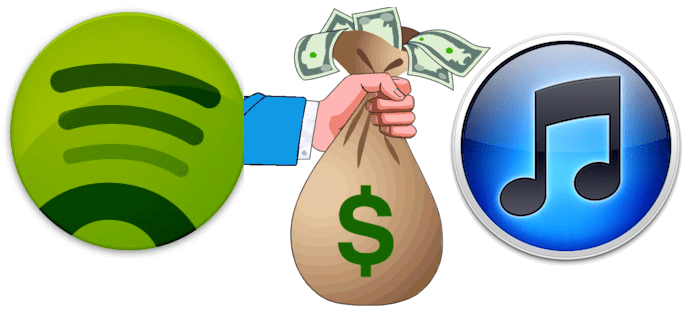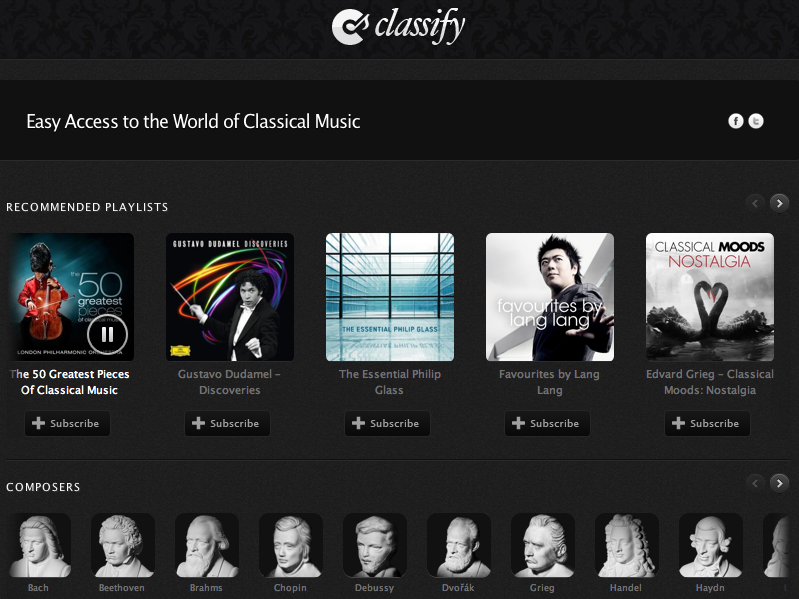Despite fears that streaming access cannibalizes sales, classical music record label X5 tells me when it launched an app within Spotify and saw streams of one album increase 412% in a month, that album’s iTunes sales shot up 50%. The Swedish label’s “The 50 Greatest Pieces of Classical Music” soon reached #1 on the iTunes Classical charts, and broke into the iTunes Top 200 album charts for the first time, hitting #152.
The stats back up claims by some record labels and Spotify’s CEO Daniel Ek that there’s no evidence of Spotify or other streaming services negatively impacting music sales. More data like this could encourage artists and labels to promote their streaming music presences, and push acts like The Black Keys and Paul McCartney who’ve pulled their catalogues from Spotify to come back.
 X5’s CEO Johan Lagerlof explains to me what’s happening: “People use the Spotify free service as a discovery tool and then go to iTunes for buying their music. The recent sales spike for ‘50 Greatest Pieces of Classical Music’ follows the same trend we have seen in Sweden, where there is a positive correlation between Spotify streaming and digital sales.”
X5’s CEO Johan Lagerlof explains to me what’s happening: “People use the Spotify free service as a discovery tool and then go to iTunes for buying their music. The recent sales spike for ‘50 Greatest Pieces of Classical Music’ follows the same trend we have seen in Sweden, where there is a positive correlation between Spotify streaming and digital sales.”
Streaming musics critics have said the tiny per song stream royalties aren’t enough to support artists or recoup the sales they cannibalize. However Lagerlof’s statements align with Ek’s, who told the Telegraph in February that “the vast majority of the artists are getting between 50 and 60 percent of all their income from Spotify”.
Those more optimistic about the influence of streaming access believe services like Spotify make it easier for listeners to discover artists and fall in love with them. Though recorded music sales dropped significantly from the CD era to today’s digital age, that lost revenue could be replaced with concert ticket and merchandise sales.
So how did X5, which was founded in 2005 as a digital-only label, improve the discoverability of its catalogue and boost sales? Not through paid marketing, which X5 wasn’t doing. Spotify opened an app platform in November to let developers build new ways for listeners to find and play music. X5 released its Classify app that lets you browse an intelligently organized library of classical music by composer, era, mood, or genre as part of the second batch of Spotify apps launched in March. Rather than having to search across Spotify’s immense library for history’s top symphonists, Classify curates them for quick browsing.
Lagerlof believes Spotify users who were streaming the album, especially ad-supported free users, then went to iTunes and bought it. (Yes, the stats are a correlation, but there aren’t any other known factors beyond Spotify that could lead to a sudden spike in sales of the album, which was originally released in 2009).
 X5’s collection and “The 50 Greatest Pieces of Classical Music” may be especially well poised to benefit from Spotify. That’s because they contain well-known songs that may be hard for younger, digital music-loving demographics to discover through search due to their long, obscure titles. Oh, and most of their artists are dead so they aren’t actively promoting themselves. Still, Spotify now has over 18 million users, there’s ears out there for any label or artists to grab.
X5’s collection and “The 50 Greatest Pieces of Classical Music” may be especially well poised to benefit from Spotify. That’s because they contain well-known songs that may be hard for younger, digital music-loving demographics to discover through search due to their long, obscure titles. Oh, and most of their artists are dead so they aren’t actively promoting themselves. Still, Spotify now has over 18 million users, there’s ears out there for any label or artists to grab.
They may be misunderstanding how streaming and digital sales revenue cycles are different, though, Lagerlof tells me. “With a streaming service, artists get paid every time you listen to something, not just once upon download. The revenue is spread out much longer.” So, an artist may earn less from streaming than sales in the first few weeks after an album release, but over their lifetime, fans playing those songs over and over could rack up more revenue than a one-time purchase. “For some marketers it’s probably better, for some it’s probably worse”.
So while Spotify and other streaming services like MOG and Rdio may be a boon for labels like X5, they’ll need to produce stats showing they can have the same benefit for current mainstream artists. You know, ones that are alive.

